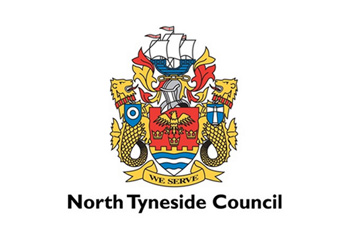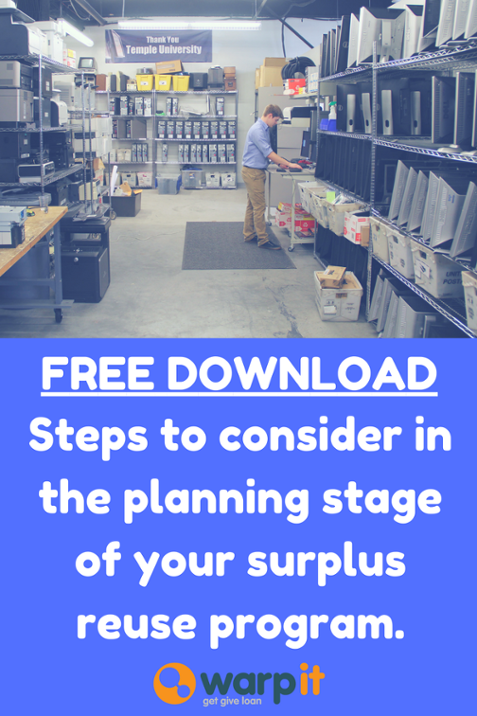We are pleased to welcome not just one, but two Warp It pioneers for this in depth interview.
Paul Nelson works as the Environmental Sustainability Manager at North Tyneside Council, with Laura Manley assisting him in her role on the Environmental Sustainability Team.
In the interview we are going to discuss:
- Generating desirability and initial participation in a new Warp It program
- Proving the business model to senior management by starting small and scaling up
- How a stationery amnesty benefits everyone
- Why a lack of listings can be one of the biggest barriers to initial participation

Hey Paul and Laura, let’s jump right into the thick of it. We know you’re both managing Warp It, so tell us, how much of a time investment has it been for you?
Paul: I’d say day-to-day it’s been almost zero work, and that’s because we got the right people from the right departments involved from the offset. Aside from a couple of meetings, everything was coordinated very quickly because everyone on the team saw the value of what we were trying to do. There was a mutual feeling that we could definitely do more to avoid disposing of valuable resources.
That’s a great point, especially in the current climate. But there must have been a little pushback, or at the very least you had to demonstrate the business case?
Paul: Ultimately yes, there’s always a finance person involved, and they are always going to ask the question ‘Are you saving us money?’. We had to prove it was a real saving. We had to show that originally somebody would have spent some of the budget on things like tables and chairs, so by reusing the stuff we already have, things that are useful, we can count those as our savings.
We pay for Warp It out of the Waste Campaigns budget, but the savings are made elsewhere. That’s fine with us, as we can demonstrate an overall saving. The waste budget doesn’t see any individual returns, but ultimately it cancels itself out through savings on the bottom line.
Are you taking credit for these savings? Because they’re quite considerable right?
Paul: Well, we haven’t shouted about them too much because we’ve been focusing our energy on getting things done! We have an advisory board which has a ‘waste work stream’, and that’s where the savings will be demonstrated. We will have to say ‘Ok, we’ve saved £20,000’, and they’ll ask us where, and they might question if all of that money would have been spent without Warp It’s intervention. The system allows us to collect evidence for this.
Where did you start, once Warp It was up and running?
Laura: The first thing we did was a stationery amnesty. We took in the things that people didn’t need to have in abundance, like ten staplers in one desk! A lot of people came forward and claimed these items, and we did some work to encourage people to register and see what was available. We also invited some schools and nurseries onto our system, some of which were moving or shutting, and for example we took in around three hundred files and folders that would likely have ended up in a skip. There’s only two bags of files left now.
Can you tell us in more detail about how you ran your stationery amnesty? Did you follow our guide, or did you take your own approach?
Laura: We did a lot of communications through our internal communications person and we pushed for engagement. We also had some big boxes brought in and asked people to come and put their surplus office equipment in them. We told people a start and end date for the amnesty, and to be honest it was quite slow at first, but people did get into it. In the second week, people were moving desks around and a lot more stuff appeared. Then, we catalogued everything, put it onto Warp It and a lot of the stuff was subsequently claimed. It proved to us that the system was required. I’ve had people email me trying to get on the system as they desperately want to see what’s available! Since then, we’ve worked with the communications team to get as much data as possible about this amnesty.
How did you create this desirability?
Laura: We used a lot of the internal communications material that you sent through. We continue to send out information every other Thursday. We include certain types of information, such as how much is now being spent on stationery. I think this has motivated people, and also because many staff don’t have the space to store things. So you could say it’s on a use-as-you-need it basis.
What has been the biggest barrier to participation?
Paul: Getting items on the system at the start was difficult.
Laura: We knew there were items that could go on there, but it all had to be catalogued. That slowed us down a bit.
Paul: We didn’t have the resources to get things started as quick as we’d have liked to. But, we tried and tried, and we knew that once we got furniture on there we’d be more successful. We had to beg, borrow and steal some extra hands to help us cataloguing, and we were amazed when we saw all the assets that were going on the system. But that extra help was a one off. Now, we get people to do the cataloguing themselves, so it’s not a time burden on our parts. We suffered from a lack of initial participation because there weren’t enough items, and so the visits kept dropping, but as soon as we listed all these items, loads of new members appeared!
I’m really impressed with what you’ve been doing. You’re making large individual savings across the board, and people are taking notice. So, what’s next for you both, in the next six months?
Laura: To keep the project going.
Paul: And to make it mainstream. We have some building closures coming up and we want to be in a position where we are prepared and aren’t given only a few days notice, with someone asking ‘What shall we do with all this then?’. I’m sure this situation happens everywhere. We’ve managed to get Warp It added to the building decommissioning checklist, alongside things like having the energy meter read. We’ve asked for a full inventory of assets done three months before the building will be closed. With that we can gradually start listing things, or listing things preemptively for when the building does close.
We are actually developing a feature that allows you to bulk upload items through a spreadsheet and then go through them, make edits and add photos. It’s going to save you a lot of time if your inventory is on a spreadsheet, so you can ask your building clearance team for it in that format to make things easier. Do you think this will make the next six months easier for you?
Laura: Sure! And if there’s anything else we need we can get in touch with you. We’ve currently got a load of items waiting to be collected, because local schools claimed them but then the summer break started. Like Paul said before, things will be easier if we are given more notice for preparation by the building clearance teams.
Thanks for all of your time and insights Paul and Laura, it’s been very informative for our readers to learn about Warp It’s function within a council environment.
Ready to start planning your reuse project?
Wait until you've read this...










